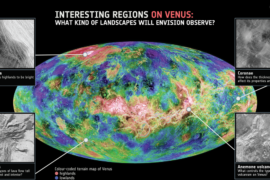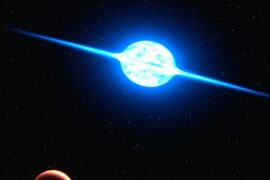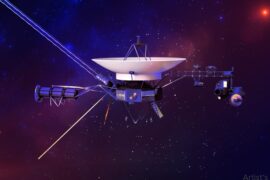Did you know that a two-pound meteorite can be worth over $500 dollars?
It might be hard to believe, but there are people that hunt and sell meteorites for a living or as a side-gig. Other people, simply like to search for them and collect them as a hobby.
Whatever your reasons are for hunting meteorites, they can be really hard to find. I mean, where do you even begin your search?
In this article, we’ll try to answer the first question that comes to mind whenever you think about getting one, and that is where are meteorites found?
But first, let’s clear something up.
The difference between meteor and meteorite
It is common for the words meteor and meteorite to be used interchangeably. But strictly speaking, they mean different things.
(I do agree scientists could have used a different word to better distinguish them, but whatever)
A meteor is a small piece of rock or metal that has entered Earth’s atmosphere. Generally, they are the size of a pebble or even a speck of dust. Check out our article on How big are meteors? for more on that.
Most meteors burn up as they enter the atmosphere because of the heat and friction. Occasionally, one of them is big enough or has the necessary composition of materials to survive the trip and ends up crashing on Earth.
When a meteor lands, it is now considered a meteorite.
Oh, and while it is traveling through space, before it enters the atmosphere, it is called a meteoroid, not a meteor.
Where do meteorites land?
Meteorites do not tend to land in one place more than others. They land randomly and almost in equal quantities all across the Earth.
Because most of the planet’s surface is covered in water, about 70% of meteorites end up under the oceans and we never hear about them.
In 2018, NASA published a dataset with more than 45,000 recorded meteorite landings. The data is available to anyone that wants to play with it here.
Some data analysts set to the task of figuring out the geographical distribution to better understand where meteorites land and created this heat map.
It is important to note this excludes antarctic meteorites. We’ll talk about those later.
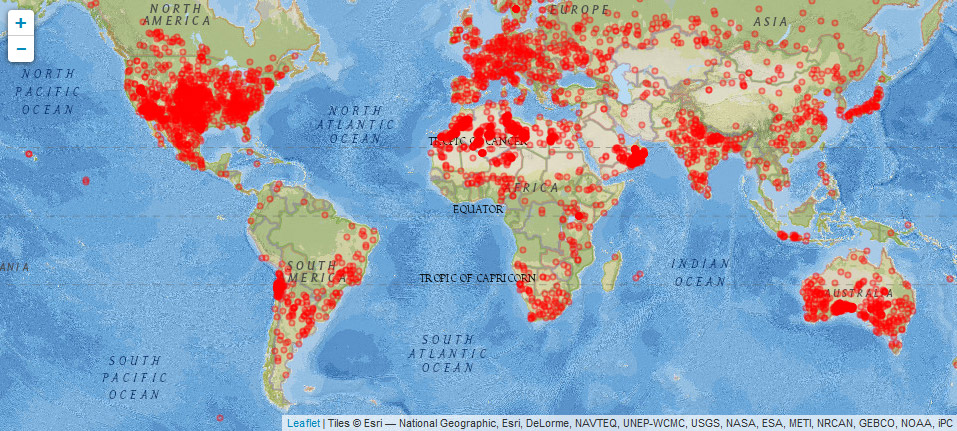
“But didn’t you say above meteorites land randomly? Why are there clearly some areas with no meteorites recorded and others with a lot?”
Well, it is important to note that this data only includes found and identified meteorites. We have no way to really track all the meteors that enter Earth because most of them are too small. This means that the meteorites that are located will be mostly in places with the most population like the US or places where people are actively looking for them like Africa.
There are many meteorites that have fallen in the Amazon jungle, but they are not being found by anyone.
The following short documentary shows the life of a meteorite hunter in Morocco.
Now when you look closely at the data, there are some places that even when you account for population size seem to have a larger amount of meteorites. For example, Africa accounts for almost half of the events above. Is that pure luck? well, not necessarily…
Where are meteorites found?
According to the meteoritical bulletin database, the place where most meteorites are found is Antarctica. More than 61% of all identified meteorites come from this continent.
You can check their data, here.
Here’s the distribution of meteorites found by continent:
| Continent | Percentage |
|---|---|
| Antarctica | 61% |
| Africa | 22% |
| Asia | 8.0% |
| South America | 3.6% |
| North America | 3.4% |
| Australia | 1.1% |
| Europe | 0.7% |
Most meteorites found outside Antarctica are found in deserts. This is because, in a desert, there isn’t much rain, so the meteorites are kept in good shape and are easier to find and recognize.
This is the reason why even in the U.S. there’s a high number of meteorites found in Arizona or New Mexico.
Why are most meteorites found in Antarctica?
More than 60% of all meteorites have been found in Antarctica. The cold and dry environment helps preserve the rocks. They are also easier to distinguish as their darker colors stand out easily against the ice and snow.
The rest of the world receives as many meteorite impacts as Antarctica. But the conditions of the continent make them easier to find.
Another reason for this effect is that there are a lot of active meteorite hunters in Antarctica because they know it is a good place to get them. This increases the number of findings disproportionally.
Where are meteors found in the US?
The following map shows the distribution of meteorites found in the US. As explained above, the areas where most of these rocks are found are desertic zones.
Because of this. The states with the highest numbers of found meteorites are Arizona and New Mexico.
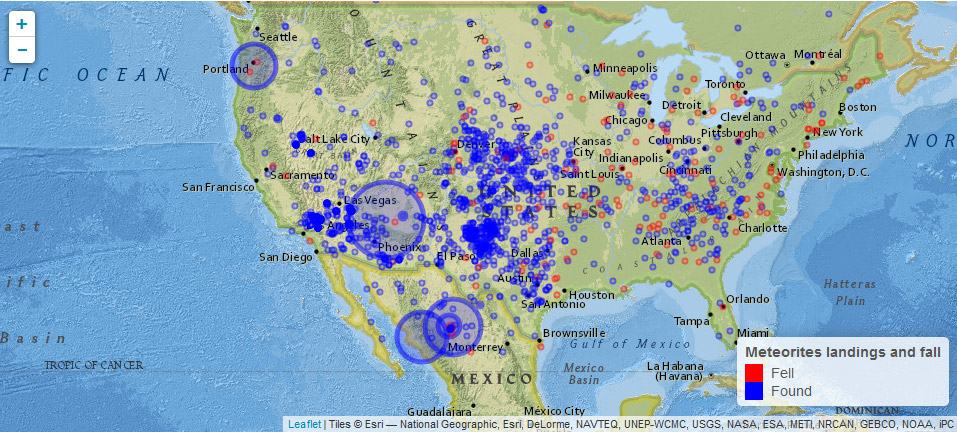
If you find a meteorite on your property in the US you can keep it.
Summary
- Most meteorites land on the oceans
- Meteorites are found in places where the rocks can remain in good shapes such as Antarctica and deserts.
- The estate where the most meteorites are found in the US is Arizona
Enjoyed this article?
Get daily 10-minute PDFs about astronomy to read before bed!
Sign up for our upcoming micro-learning service where you will learn something new about space and beyond every day while winding down.


